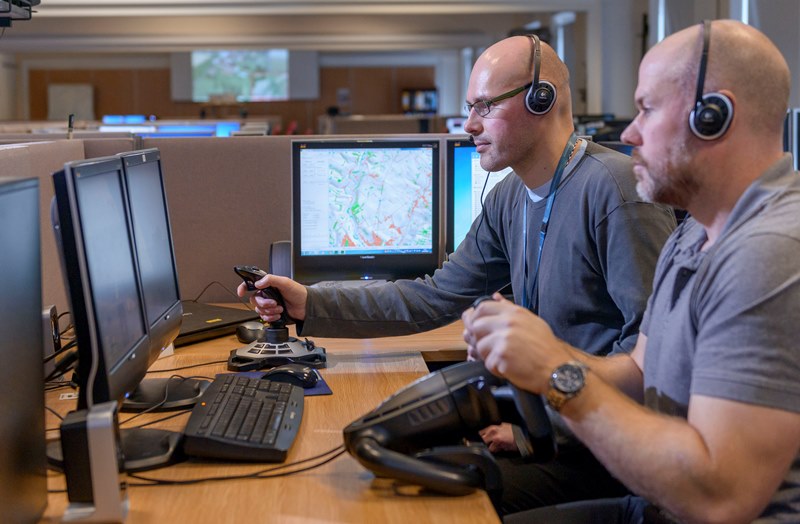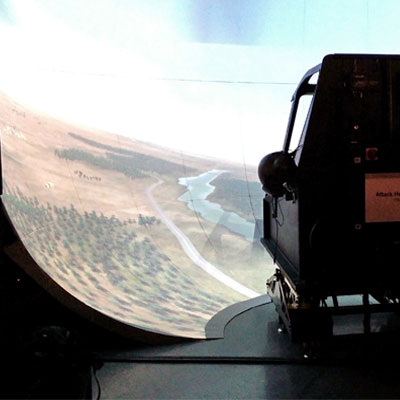The simulation and synthetic environment laboratory (SSEL) is operated by the Centre for Simulation and Analytics, Cranfield University. The SSEL is an integral part of the MOD Defence Capability Centre (DCC) at Shrivenham.
The SSEL provides a focus for education, research and consultancy in the applications of defence modelling, simulation and synthetic environments, and in their underlying principles and technologies as applied throughout the wider defence and security environments – including training, education, experimentation, analysis and decision support.
The SSEL supports a wide range of courses, ranging from MSc level qualifications to shorter specialist programmes. By provision of modelling and simulation (MS) supporting facilities, the SSEL underpins a wide range of activities for MS specialists, delivers education and awareness for those working in other areas and enables hands-on education across other academic disciplines.

Summary of applications
Facilities within the SSEL include:
- A reconfigurable space comprising approximately 150 PCs;
- Access to a suite of mainly virtual and constructive simulation applications;
- Connectivity to the JANET academic network and a dedicated broadband link, which are regularly used for the creation of academic wide area network (WAN)-based distributed simulation exercises;
- Local laboratory wi-fi network.
SSEL simulation applications and tools include those used to support activities in the following areas:
- Distributed interactive simulation (DIS) and high-level architecture (HLA) synthetic environment applications;
- Networked and distributed systems and simulation interoperability;
- Operational analysis/operational research;
- Constructive simulation and modelling;
- 3D real-time computer graphics, virtual reality (VR), modelling and visualisation;
- Game technology and commercial off-the-shelf (COTS) applications;
- Terrain database construction and geographical information systems (GIS);
- Computer generated forces and intelligent systems;
- Simulation building (discrete event and continuous);
- Wargaming and combat modelling.
Many of these tools and applications are made available to the SSEL for academic purposes through strong links with the MOD and the industry supplier base.
Key facts
- Reconfigurable and flexible facility with dedicated staff;
- Able to employ and demonstrate a wide variety of defence-specific modelling and simulation applications and tools;
- Intended to support both academic activities specifically in MS, for those focusing in that discipline, but also to enable teaching using simulation, when bringing other academic disciplines to life through experimentation;
- Provides capabilities that leverage strong links with both the MOD and defence industry.
Using the facility
The primary role of the SSEL is to support academic activity, including student exercises, experiments and projects. Examples of these include:
- Twice yearly exercise longhaul multi-site WAN distributed simulation activities – this has previously involved industry participants such as QinetiQ, BAE Systems, Simutec Systems, Babcock, Cassidian, Boeing UK and Boeing India;
- Comparison of COTS computer generated forces applications;
- Use of modelling and simulation to evaluate main battle tank design concepts;
- Virtual trials and small arms testbeds for Trials Managers Course;
- Survivability and command and control experiments for the Battlespace Technology MSc course;
- Unmanned air systems basic appreciation.
The SSEL is also involved in other research projects, examples of which include:
- MOD-Department of Defense (DOD) research into massively multiplayer online gaming (with QinetiQ);
- Simulation interoperability frameworks;
- Air mission rehearsal capabilities;
- Future soldier capability trials (with Roke Manor Research).


